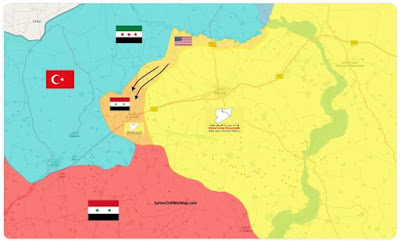We all need a reference point. Most, including myself, usually use September 2001 as the starting point, but that never really seemed right. Perhaps the VA is closer to the correct answer.
Sure, this is more just a reflection of the Legislative and Executive Branches’ inability to effectively do their job, but there is a bit of truth to this.
02 AUG 1990 is when the VA says the war we are still in started. Over 28 years ago.
Here is where, in a way, things have come full circle.
As we got ready for 2QFY91’s DESERT STORM, you know who we fought along side during the liberation of Kuwait? Of note, they were held in reserve, but in actuality, neither they nor the Egyptians in this part of the line had much enthusiasm for the fight and mostly refused to engage when they were needed most. However, there they were.
And what did we see over the weekend?
The Unites States, France, and Great Britain standing shoulder to shoulder with the Syrian army against Turkish aggression.
What has changed since 1990? Well, besides Iran being the boogie man, a lot.
One of the foundation reasons for the Gulf War, the free flow of oil (to us) at market prices, has changed significantly; in North America, we are completely self-sufficient with oil. We have an inertia to our policy and we have managed to tangle ourselves in that areas internal problems to the point that we are policing internal Syrian security against another NATO ally. So, we’re still there and will be for … who knows – 2046?
And so, my final post of 2018 looks back at 1990 and thinks, “We’ve really got ourselves in a mess this time, didn’t we?”





































